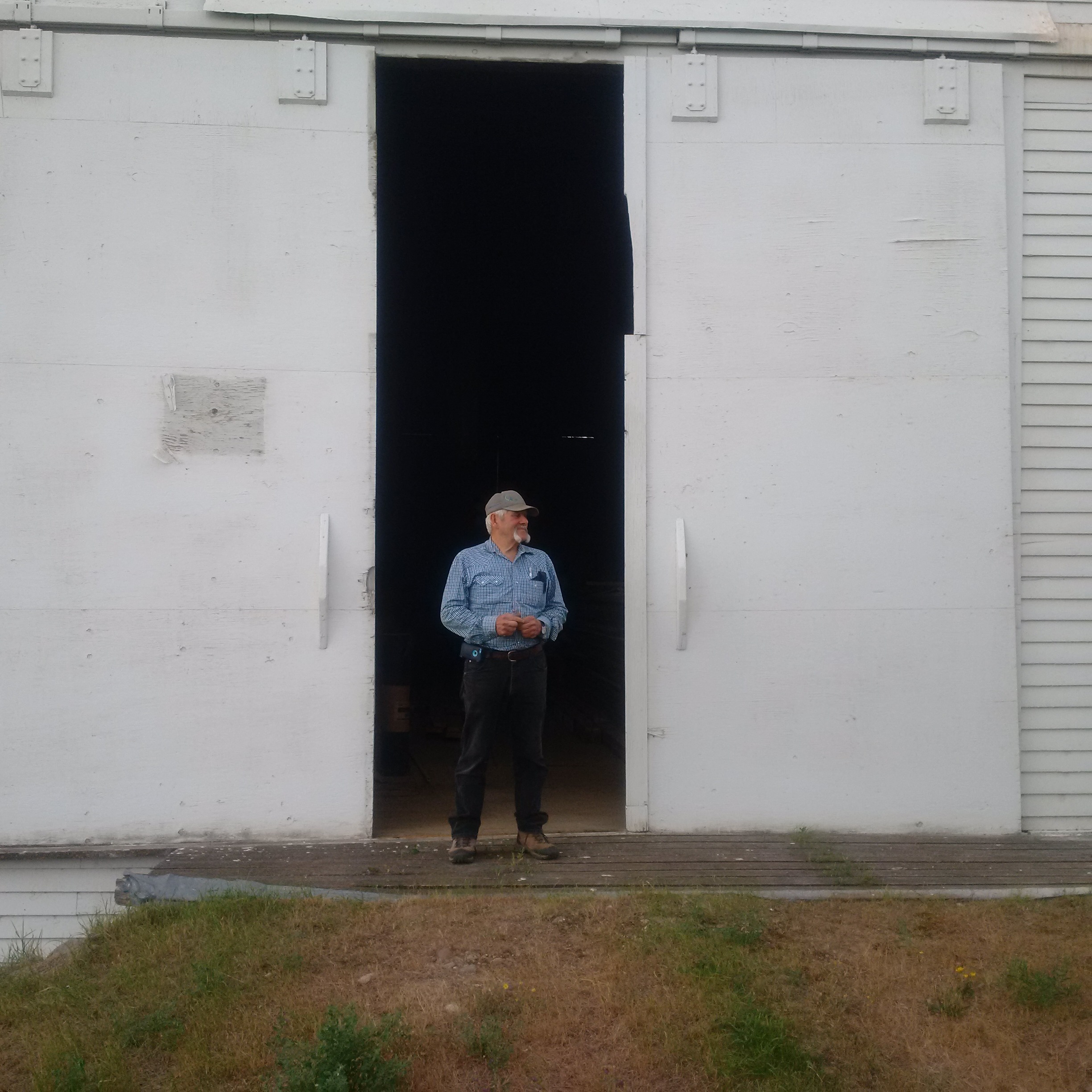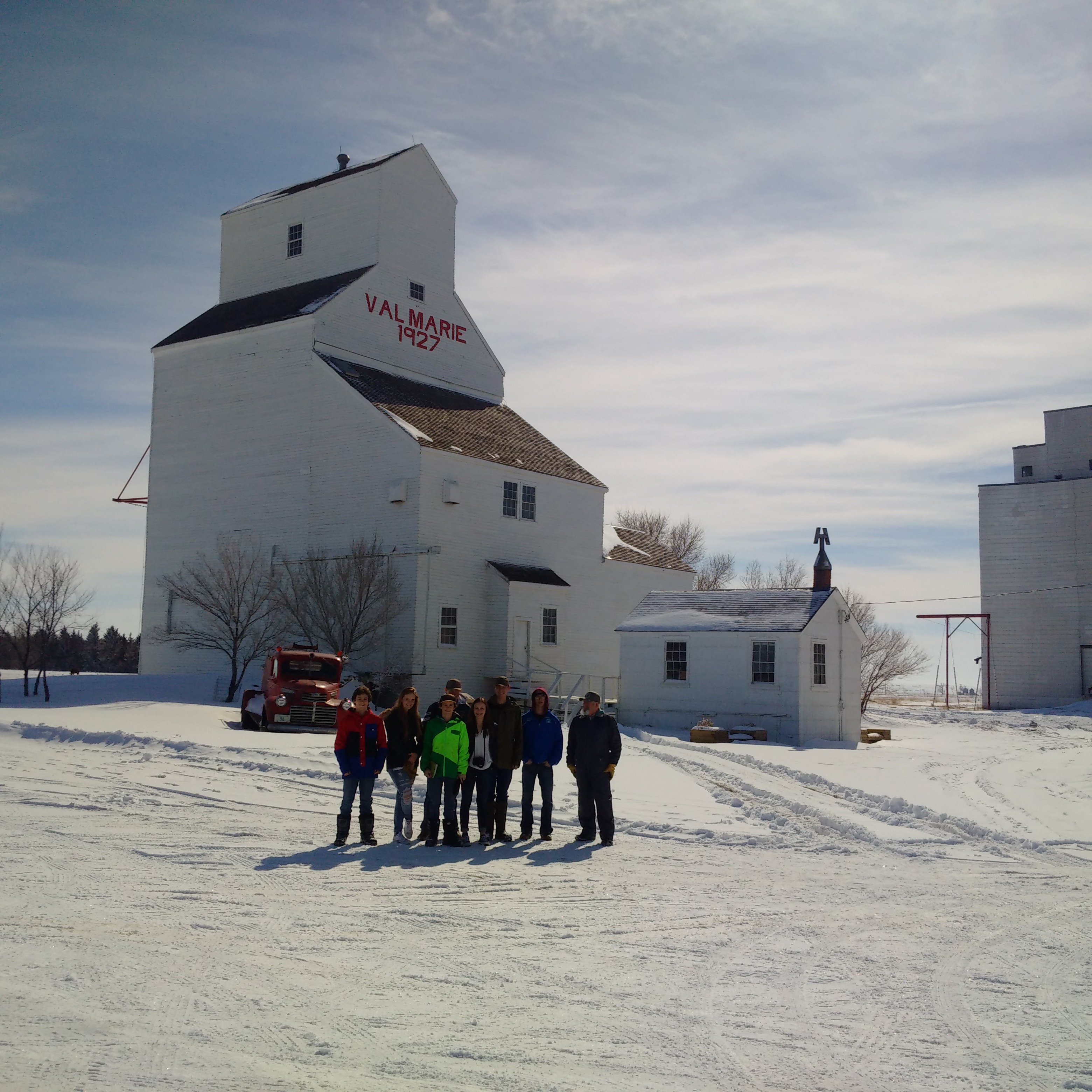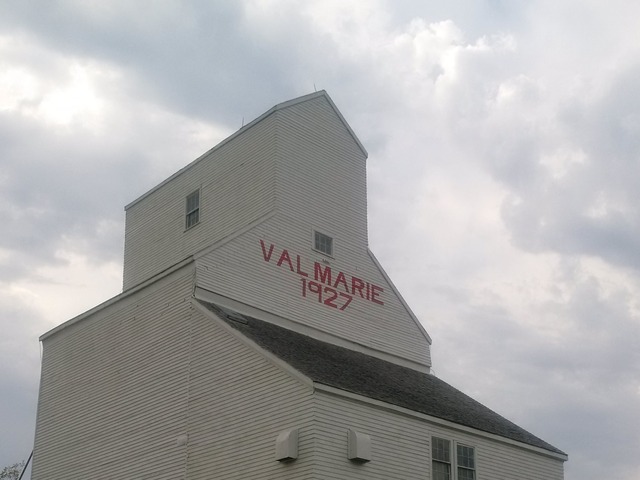Kristin Catherwood, Intangible Cultural Heritage Development Officer
There aren't many places like Val Marie. Located about 30 kilometres from the US border and with the nearest urban centre (Swift Current) more than an hour away, Val Marie has a population of fewer than 100 people - though it is boosted every summer by the influx of seasonal employees who work and do research at Grasslands National Park. Val Marie, which dubbed itself the Prairie Dog capital of Canada and is the gateway to Grasslands National Park, is also like many typical southern prairie towns in that it got its start as an agricultural community. Val Marie had two grain elevators at its peak - and it still has them. The newer Wheat Pool elevator has, like other elevators in the province, been bought by a group of local farmers who use it for storage. The other elevator, which was built as an Alberta Pacific elevator in 1927, is still standing because of the dedication of a group of volunteers.
The Val Marie Heritage Elevator Committee raised a substantial amount of money to restore the elevator's exterior and has spent more than $105,000 ($20,000 came from a grant from the Saskatchewan Heritage Foundation). Now as the committee sets it sights on the next phase of this ongoing restoration, Heritage Saskatchewan is joining the effort to document and celebrate the intangible cultural heritage of the grain elevator.
Heritage Saskatchewan has partnered with the Val Marie Heritage Elevator Committee to undertake a living heritage project. Based on the Coal in Coronach living heritage project, in Val Marie we are aiming to raise the profile of the elevator locally, as well as provincially, and perhaps even nationally. In 2015, the National Trust for Canada named wooden grain elevators as one of the most endangered places in Canada. As we lose these buildings at an alarming rate, Val Marie is an inspiring example of what a community can do. With its tiny population and remote location, Val Marie is a challenge to other communities: if they can do it, why can't you?
I met Maurice Lemire in Val Marie a few years ago. I quickly learned that he has been the driving force behind this restoration project. Maurice's father, Arthur Lemire, was the elevator agent at the Val Marie

Alberta Pacific elevator when it was first built in 1927 and retained the job for more than 30 years. In that time, it became a Federal grain elevator. When I have brought friends to visit Val Marie and Grasslands National Park, I always called Maurice to give us a tour of the elevator. People from out-of-province are always excited to get the chance to see a grain elevator, and Maurice's personal connection to the building made a memorable tour.
I am inspired by the story of the Val Marie Heritage Elevator and saw it as a perfect opportunity to develop a living heritage project. The Val Marie Heritage Elevator Committee has done exceptional work, but their task is by no means over. The exterior has been restored, but decisions must be made about the interior. Furthermore, the looming question: what is the future of the elevator? It has been preserved for now, along with many artifacts. Locals have access to an important part of their community's heritage, and tourists can enjoy seeing an authentic wooden grain elevator capping off Main Street. But, as with all rural communities, Val Marie has many pressing contemporary challenges: aging infrastructure being one of them. Heritage buildings have a hard time competing. Younger generations have grown up in a time when the elevators are no longer in use, and so their personal connection to these buildings is lacking. If we want to preserve these iconic landmarks into the future, we have to reconceptualize what they mean to us as individuals and communities.
This living heritage project will document local stories of the elevator and pose questions about its potential future. Its goal is to involve as many Val Marie and area citizens as possible, including youth. As the project gets underway, one of its most exciting components is a video documentation project that will be completed by the Grade 10 and 11 classes at Val Marie School. Last week I spent the day with them, teaching them the basics of film making. In the afternoon Maurice Lemire took us for a tour and the students all tried their hands at gathering footage. Now the students will prepare their own videos of some aspect of the elevator's heritage.

The Val Marie Elevator Living Heritage project will be ongoing for the next several months, so watch our social media spaces and this blog for updates!


